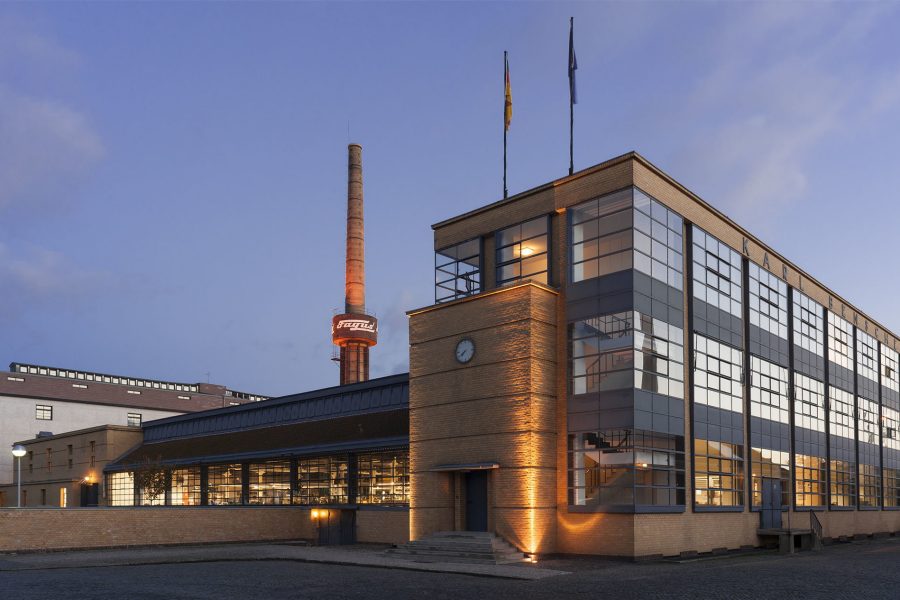5 defining Bauhaus buildings

Practical. Modest. Simple. The Bauhaus (literally ‘building house’) movement revolutionised 20th century architecture and design as it sought to unite art, technology and aesthetics in a quest for functionality. The utilitarian concept embraced the ‘age of the machine’ – of mass production and modern consumerism and economic sensibilities. The world had changed after the First World War: so too should its approach to design, decided the German master of modernist architecture Walter Gropius, who founded the Bauhaus school in Weimar Germany on 1 April 1919. Now the world, and architecture, has moved on, it’s time to revisit five buildings that helped define the aesthetics of the 20th century.

Credit: Tadashi Okochi
1. Bauhaus Building, Dessau
In 1925, the Bauhaus school moved to a new home in Dessau. Designed by Gropius during the movement’s heyday, the building features archetypal glass curtain walls to reveal the interior workings and prominent modern typeface on the facade. The futuristic statement, branded ‘un-German’ by members of the Nazi regime, became a casualty of the Second World War’s bombing raids. Recognition as a Unesco-listed World Heritage site prompted a total renovation, completed in 2016. A museum is scheduled to open on campus in September to honour the centenary.

Credit: Michael Jacobs/Art in All of Us/Getty Images
2. White City, Tel Aviv
With roughly 4,000 Bauhaus-style homes, the White City is the largest concentration of Bauhaus buildings in the world. Many Jewish architects fled to Israel in the early 1930s, bringing the style with them. Structures reflected their surroundings: white to reflect the heat with diminutive ‘thermometer’ windows to limit the sun’s glare, and flat roofs where residents could socialise in the cool evenings.

Credit: Richard Barnes / © COPYRIGHT 2019, ALAN I W FRANK. ALL RIGHTS RESERVED
3. Alan IW Frank House, Pittsburgh
Gropius and student-turned-partner Marcel Breuer collaborated on a private residence , subsequently heralded as one of their most important. Everything from the doors to the light switches was conceived by the master architects. Defining features include the curved glass facade and cantilever staircase. The residence also features one of the first examples of central air conditioning.

Credit: Nick Kane
4. Isokon Building, London
This 1934 concrete apartment block in Hampstead was designed by Canadian architect Wells Coates. Early residents included Walter Gropius himself and Agatha Christie. The communal kitchen was converted into the Isobar restaurant in 1937 and frequented by the likes of sculptor Henry Moore. The Isokon Gallery allows guests today to learn more about the experiment of collective housing.

Credit: UNESCO / Fagus Werk , Architekt Walter Gropius
5. Fagus Factory, Hannover
Carl Benscheidt commissioned Gropius to design the Fagus shoe last factory , one of the first modern industrial buildings – construction began in 1911. With a glass and steel structure and unsupported glazed corners, it ushered in a new construction style. Set over five floors, the former warehouse is now an exhibition space, with shoe lasts dangling artfully from the ceiling.
More inspiration
- China – the Chinese Mainland, Hong Kong SAR, Macao SAR and Taiwan Region
- Hong Kong SAR - English
- Chinese Mainland (China) - English
- Taiwan, China - English
- 香港特別行政區 - 繁體中文
- 中国內地 - 简体中文
- 中國台灣 - 繁體中文
- Africa
- South Africa - English
- Asia
- Bangladesh - English
- Korea - English
- Singapore - English
- Cambodia - English
- 한국 - 한국어
- Sri Lanka - English
- India - English
- Malaysia - English
- Thailand - English
- Indonesia - English
- Maldives - English
- ประเทศไทย - ภาษาไทย
- Indonesia - Bahasa Indonesia
- Myanmar - English
- Vietnam - English
- Japan - English
- Nepal - English
- Việt Nam - tiếng Việt
- 日本 - 日本語
- Philippines - English
- Australasia
- Australia - English
- New Zealand - English








